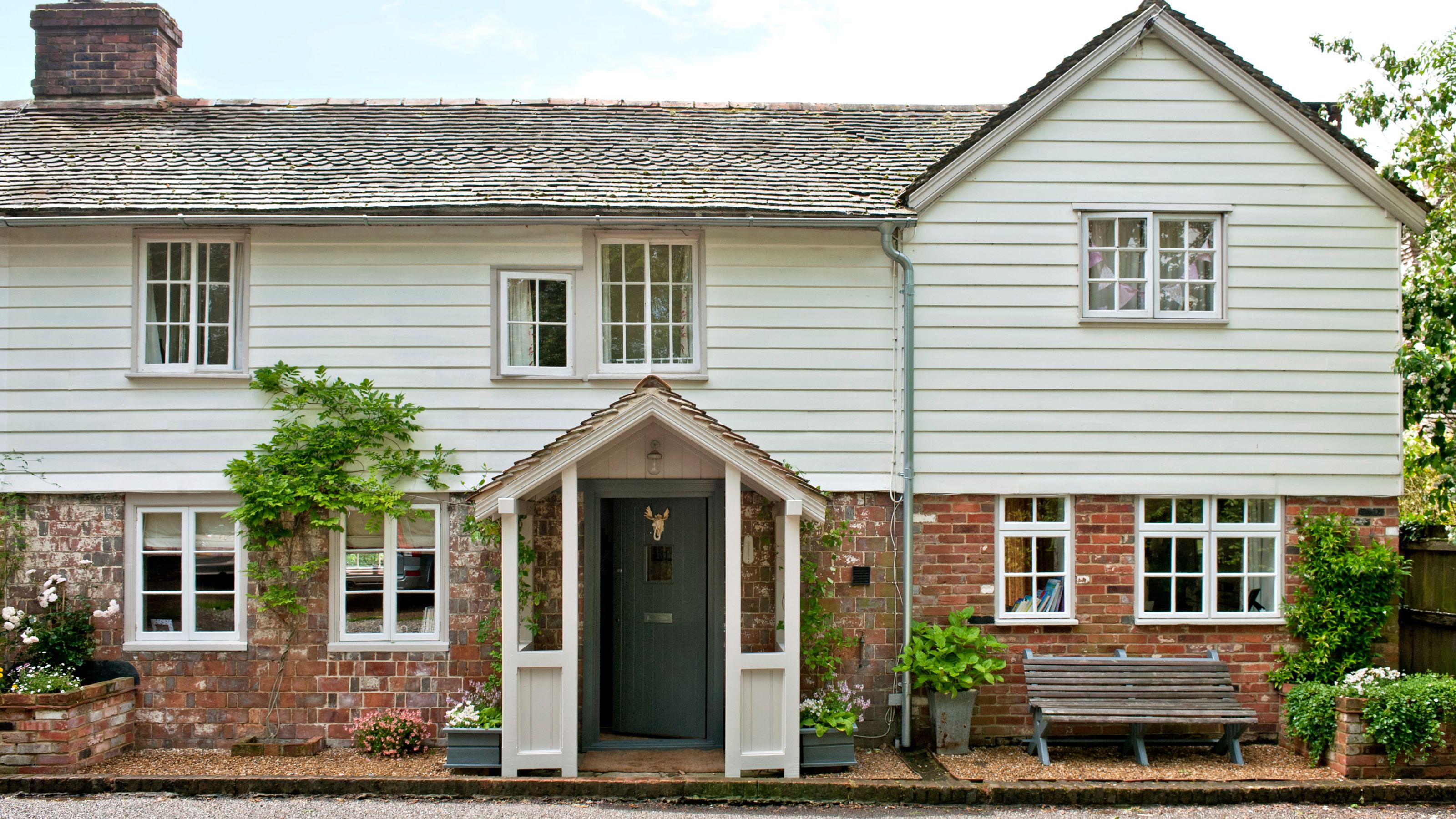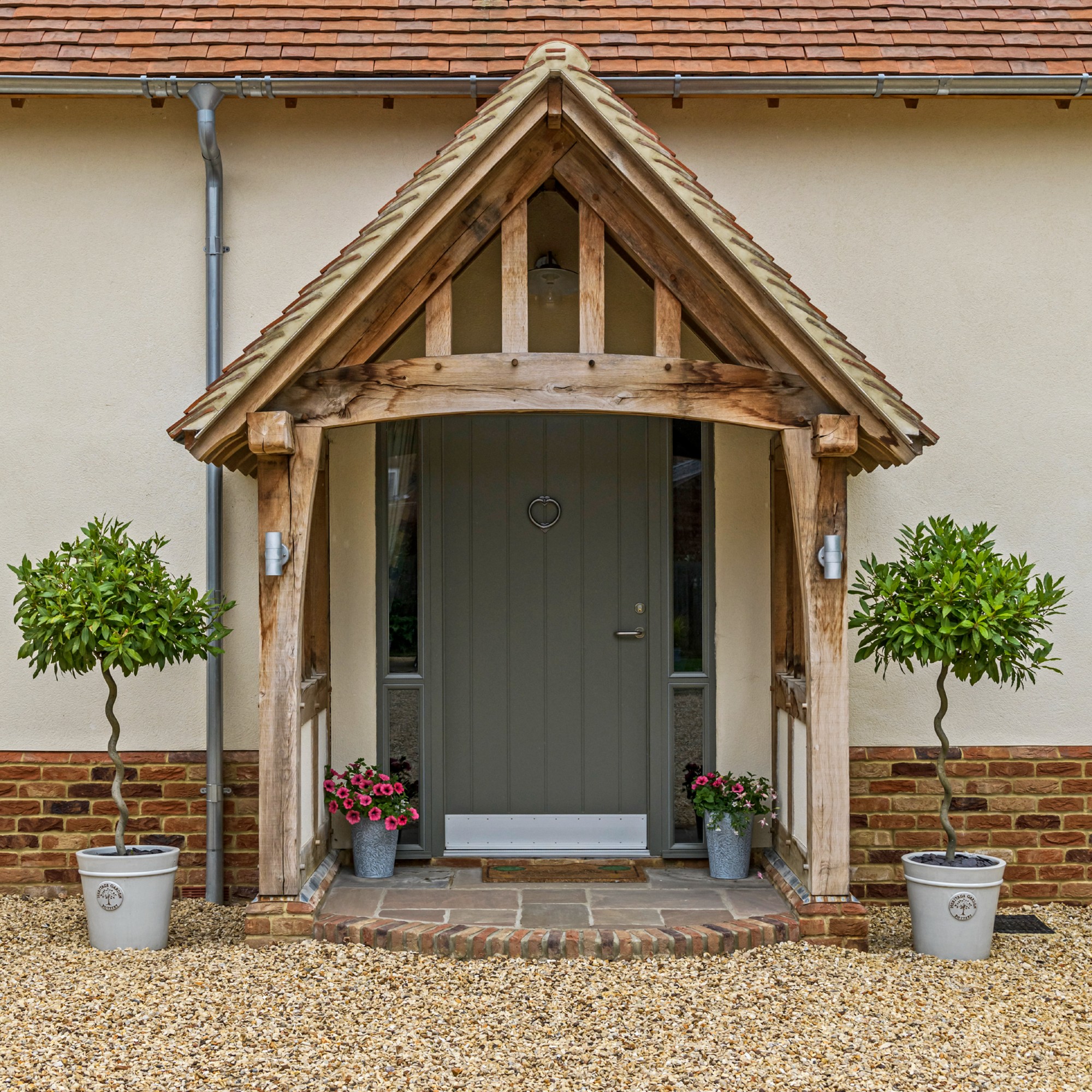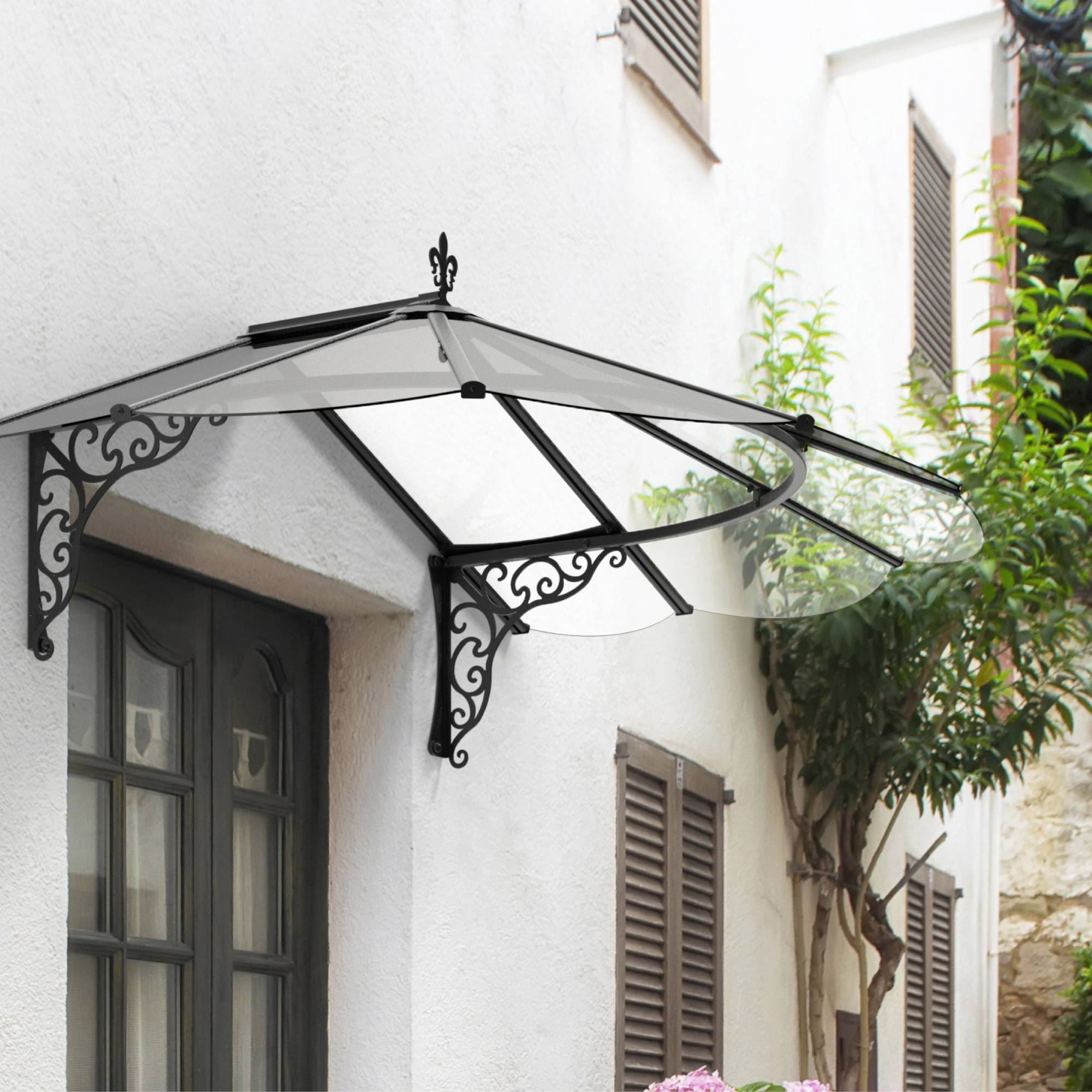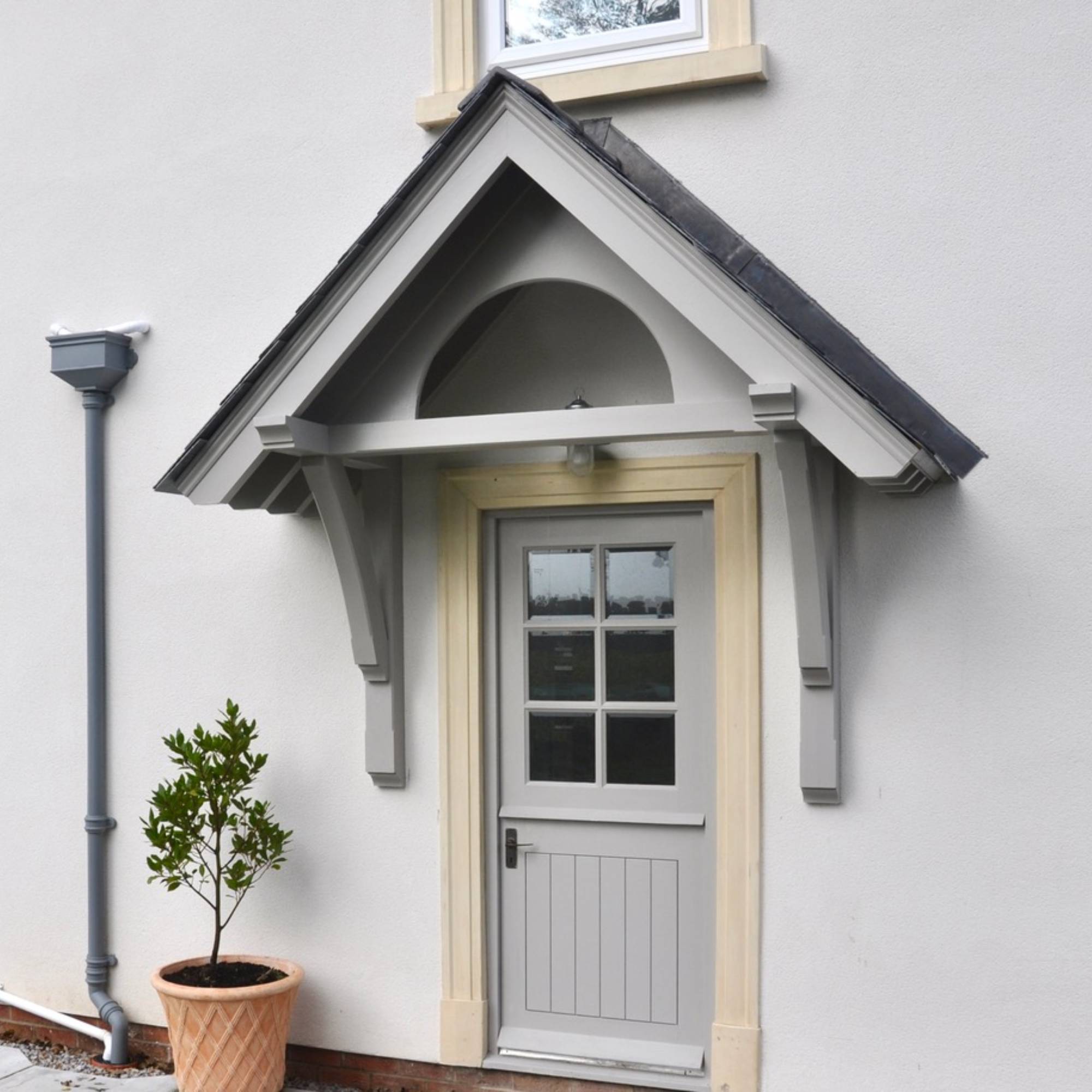Debating between uPVC and timber for your porch? I asked the experts what the real difference is, and if one is actually better than the other
Each have their pros and cons

Unassuming and easily ignored, front porches are a final finishing flourish that can give a house character and detail.
The material and style of your front porch ideas will impact your home’s kerb appeal, the maintenance required and the cost dedicated to this project.
'Picking the right porch for your home is more important than you think, it can make the difference between creating a practical addition with the wow factor and an impractical out of character statement,' advises David Sutton of The English Porch Company.
I've weighed up two popular material choices — uPVC and timber — to see how they compare.
What’s the difference between uPVC and timber porches?

When it comes to building a porch, uPVC and timber are two of the most popular materials. But there are considerable differences between the two:
- uPVC tends to be less expensive than timber
- Timber tends to last longer than uPVC (especially hardwood varieties)
- In terms of maintenance, timber requires more to keep it looking its best
- If you want the flexibility to create ornate designs, then opt for timber
- uPVC would look out of place on a period property, where timber would be more in keeping.
With these differences in mind, you’ll need to think carefully about what you require and can afford before building your porch.
Whether you want a canopy, open porch or something fully enclosed, you might find yourself choosing between timber and uPVC.
Sign up to our newsletter for style inspiration, real homes, project and garden advice and shopping know-how
Let's look at each material in more detail:
uPVC porches

Galvanised steel is matched with uPVC to create this delicate traditional-style canopy. The Palram - Canopia Iris Door canopy costs £550 from B&Q.
uPVC can be seen up and down the country providing affordable yet durable windows and doors, so it can be nice to complement these with a matching porch.
Cost: The material is known for being cost-effective, and uPVC porches are no different. A uPVC canopy porch should cost around £100-£300 (polycarbonate canopies might be even cheaper) and enclosed porches from around £2,000 and up to £6,000. Open porches with dwarf walls or posts to support the structure tend not to be made from uPVC, and would more likely be made from GRP (glass reinforced plastic/polymer) to provide the support required.
Appearance: These days uPVC can create a fairly decent replica of timber, but you’ll always be able to tell up close, unfortunately. That being said, you could also take advantage of coloured uPVC being more readily available to add more modern character to your entrance.
Durability and lifespan: uPVC is fairly durable, able to withstand weather for decades and better manufacturing means that higher quality products are UV resistant, meaning they will fade and degrade slower. uPVC generally lasts around 25-35 years before it might become unsafe.
Timber porches

Wood is the traditional material for porches and suits pretty much any home, where uPVC might only suit more modern architecture. 'A timber porch is highly customisable in terms of design, size, and finish (paint or stain),' says Madeleine Clarke of Dunster House. 'They can be tailored to perfectly match the existing house style - it offers a natural warmth and character.'
Cost: Timber is more expensive than uPVC, with a canopy porch in softwood starting at £150 and hardwood designs at around £450. For open porches, look at a budget of at least £900, and anywhere from £3,500 to £7,000 for an enclosed porch.
Appearance: The great thing about timber is that you can varnish and paint it in different colours and finishes every couple of years, although this might put some homeowners off. Left natural, the wood will weather to a silver grey (although softwoods definitely need extra protection from the elements).
Durability and lifespan: Timber porches can last anywhere from 60 to over 100 years, depending on how you keep up maintenance. Softwood will degrade faster than hardwood.
How to choose between a uPVC and timber porch

The decision between a uPVC and timber porch will come down to your budget, style of house and willingness for ongoing maintenance.
A wooden porch will not just be more expensive upfront than uPVC, but will also cost every few years to either hire a tradesperson to sand and repaint/revarnish the wood or to do it yourself to keep it in good condition.
However, timber has a far longer lifespan, so you’ll find a better value for money long-term. Additionally, wood is almost universally liked for the majority of houses where uPVC might look odd when attached to the front door of a historic home.
From a security perspective, an enclosed timber porch with a solid wood front door will be far stronger than uPVC, although uPVC can offer a multi-point locking system that can be more resistant to forced entries.
A wooden porch will also be more thermally efficient than a uPVC design, which is worth bearing in mind as part of a wider project to boost your home's energy efficiency
Is timber better than uPVC for a porch?
While timber has its impressive pros, whether it's better than uPVC for your porch will depend on what's more important for your current circumstances.
If you want to add a porch to a characterful period property, then yes, timber is most likely better than uPVC.
However, if you are on a tight budget and live in a more modern home, then uPVC could be ideal.
'Both materials properties [means which is better] ultimately depends on the homeowner's individual priorities, budget, the style of their house, and their willingness to undertake maintenance,' says Madeleine Clarke.
For an mid-point between the low-maintenance of plastic and the interest and lifespan of timber, perhaps consider a composite porch? Many designs are made using recycled materials and can last up to 50 years without needing repainting.
Once you've decided on the material for your addition, you can think about incorporating one of these porch seating ideas too.
Amy is an experienced interiors and renovation journalist. She was Assistant Editor of Ideal Home's sister brand Homebuilding & Renovating for five years, before becoming an editor for Independent Advisor. Amy is also an experienced renovator herself. With her partner, she has renovated a mid-century property on a DIY basis, and is now taking on an 1800s cottage in Somerset.
You must confirm your public display name before commenting
Please logout and then login again, you will then be prompted to enter your display name.